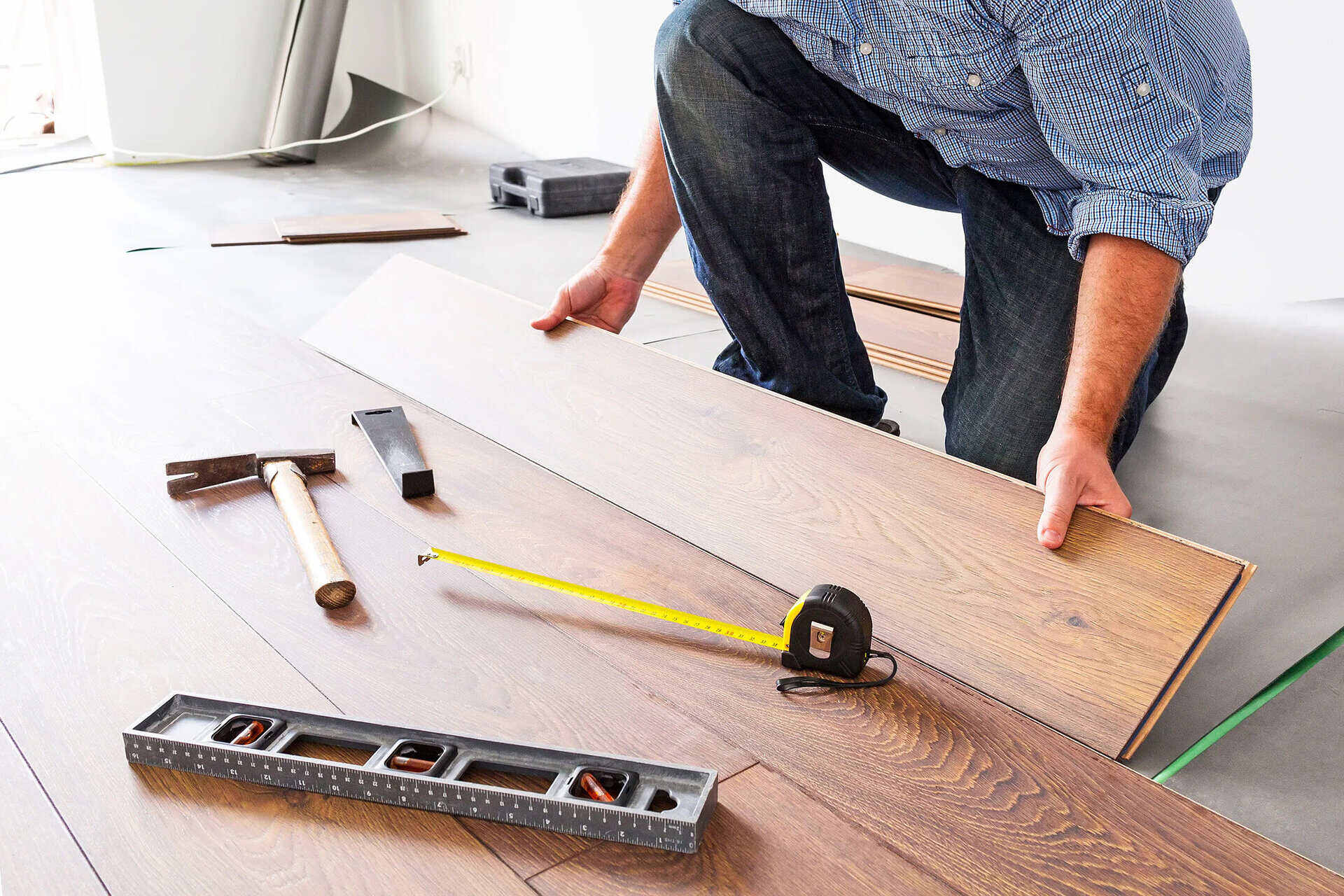Home>Renovation & DIY>Home Renovation Guides>Home Improvements: Which Credit Card Is Best


Home Renovation Guides
Home Improvements: Which Credit Card Is Best
Modified: January 4, 2024
Discover the best credit card options for your home renovations with our comprehensive guides. Find the perfect fit for your project today!
(Many of the links in this article redirect to a specific reviewed product. Your purchase of these products through affiliate links helps to generate commission for Storables.com, at no extra cost. Learn more)
Introduction
Embarking on home improvement projects can be an exciting yet daunting endeavor. Whether you're considering a kitchen renovation, bathroom remodel, or a complete home makeover, the costs involved can be substantial. In such instances, many homeowners turn to credit cards as a convenient financing option. However, with a myriad of credit cards available, each offering unique benefits and terms, it's crucial to choose the right one for your specific home improvement needs.
When selecting a credit card for home improvements, various factors come into play. From interest rates and rewards programs to promotional offers and fees, the options can seem overwhelming. This comprehensive guide aims to demystify the process by providing valuable insights into the key considerations when choosing a credit card for home improvement projects. Additionally, we'll compare different credit cards tailored for home improvements, outline their benefits and drawbacks, and ultimately help you make an informed decision. So, let's delve into the factors to consider when selecting the best credit card for your home improvement endeavors.
Key Takeaways:
- Choose a credit card for home improvements based on low interest rates, rewards, and manageable fees. Compare options like Chase Freedom Unlimited and Citi Double Cash Card for the best fit.
- Credit cards offer convenience and rewards for home improvements, but be mindful of potential drawbacks like interest costs and annual fees. Use them wisely to enhance your projects and financial well-being.
Factors to Consider When Choosing a Credit Card for Home Improvements
When evaluating credit cards for financing home improvement projects, several crucial factors should guide your decision-making process. Understanding these considerations will help you select a credit card that aligns with your specific needs and financial circumstances.
- Interest Rates: One of the primary factors to consider is the card’s annual percentage rate (APR). A lower APR can significantly reduce the overall cost of borrowing for your home improvement expenses. Additionally, some credit cards offer promotional periods with 0% APR for an initial period, providing an opportunity to save on interest charges.
- Rewards and Benefits: Many credit cards provide rewards programs tailored to home improvement spending. These rewards may include cashback on purchases from home improvement stores, bonus points for specific categories such as home furnishings, or redeemable miles for travel, which can be beneficial for purchasing materials or appliances for your home projects.
- Annual Fees: Consider whether the credit card carries an annual fee. While some cards offer valuable rewards and benefits, they may come with an annual fee that could offset the advantages, especially if you don’t anticipate using the card frequently.
- Credit Limit: Assess the credit limit offered by the card, ensuring it aligns with your estimated home improvement expenses. A higher credit limit can provide flexibility and convenience, particularly for larger-scale projects.
- Introductory Offers: Many credit cards feature introductory offers, such as sign-up bonuses, cashback incentives, or initial spending bonuses. These offers can provide immediate value when used for home improvement purchases.
- Customer Service and Support: Evaluate the quality of customer service and support offered by the credit card issuer. In the event of any issues or inquiries related to your home improvement transactions, responsive and reliable customer support can be invaluable.
By carefully considering these factors and how they align with your specific home improvement financing needs, you can make an informed decision when selecting a credit card for your projects. Now, let’s proceed to compare different credit cards tailored for home improvements to further aid in your decision-making process.
Comparison of Different Credit Cards for Home Improvements
When exploring credit card options for financing home improvement projects, it’s essential to compare and contrast the features and benefits offered by various cards. Each credit card comes with its own set of terms, rewards, and potential drawbacks, making it crucial to assess how they align with your specific needs.
Here’s a comparison of different credit cards tailored for home improvements:
- Chase Freedom Unlimited: This card offers a competitive cashback program, providing 1.5% cashback on all purchases. Additionally, it features a 0% introductory APR for the first 15 months, making it an attractive option for financing home improvement expenses without incurring interest charges during the initial period.
- Citi Double Cash Card: With this card, you can earn cashback twice: 1% on purchases and an additional 1% as you pay for those purchases. This feature can be advantageous for accruing rewards on home improvement spending and managing the associated costs effectively.
- Discover it Cash Back: Known for its generous cashback rewards, this card offers 5% cashback on rotating quarterly categories, including home improvement store purchases during specific periods. Moreover, it provides an introductory APR of 0% for the first 14 months, allowing for interest-free financing for qualifying expenses.
- Home Depot Consumer Credit Card: Specifically designed for home improvement purchases, this card offers special financing options for larger projects. It includes deferred interest or fixed monthly payments for a predetermined period, catering to various budgeting preferences and project scopes.
- Lowe’s Advantage Card: Similar to the Home Depot Consumer Credit Card, this card provides financing options tailored to home improvement needs. It offers a 5% discount on eligible purchases or special financing for larger expenses, making it a suitable choice for frequent shoppers at Lowe’s.
While these cards offer distinct benefits, it’s essential to carefully review their terms, including APR after the introductory period, potential fees, and redemption options. By comparing these credit cards and their suitability for your home improvement projects, you can make an informed choice that aligns with your financial goals and preferences.
Benefits and Drawbacks of Using Credit Cards for Home Improvements
Utilizing credit cards for financing home improvement endeavors presents both advantages and potential drawbacks. Understanding these can help you weigh the pros and cons before deciding on the most suitable financing option for your projects.
Benefits:
- Convenience: Credit cards offer a convenient and readily accessible means of financing home improvement expenses. They allow for seamless transactions, whether purchasing materials, hiring contractors, or covering unexpected project costs.
- Rewards and Incentives: Many credit cards provide rewards and incentives tailored to home improvement spending, such as cashback, points, or discounts at specific retailers. These rewards can add value to your home improvement budget, effectively reducing overall project costs.
- Flexibility: Credit cards offer flexibility in managing home improvement expenses, allowing you to make purchases as needed and potentially benefit from interest-free periods during promotional offers.
- Building Credit: Responsible use of credit cards for home improvement projects can contribute to building or improving your credit history, potentially enhancing your financial profile for future borrowing needs.
Drawbacks:
- Interest Costs: If not managed prudently, credit card balances can accrue interest, potentially increasing the overall cost of your home improvement projects over time.
- Annual Fees: Some credit cards may carry annual fees, which can offset the benefits of rewards and incentives, particularly if the card’s features do not align with your spending habits and preferences.
- Impact on Credit Utilization: Utilizing a significant portion of your available credit for home improvement expenses can impact your credit utilization ratio, potentially affecting your credit score in the short term.
- Discipline and Budgeting: Without proper budgeting and discipline, the convenience of credit cards can lead to overspending on home improvement projects, potentially causing financial strain in the long run.
Considering these benefits and drawbacks is essential when evaluating the suitability of credit cards for financing your home improvement endeavors. By understanding the potential implications and leveraging the advantages effectively, you can make informed decisions to support your projects while managing your financial well-being.
When choosing a credit card for home improvements, look for one with a low interest rate, no annual fee, and rewards for home improvement purchases. This can help you save money and earn rewards while making necessary upgrades to your home.
Conclusion
Embarking on home improvement projects requires careful consideration of financing options to ensure the successful realization of your vision. Choosing the right credit card for home improvements involves evaluating various factors, comparing available options, and understanding the associated benefits and drawbacks.
By considering crucial factors such as interest rates, rewards programs, annual fees, credit limits, introductory offers, and customer support, you can make an informed decision when selecting a credit card tailored for your home improvement needs. Additionally, comparing different credit cards, such as the Chase Freedom Unlimited, Citi Double Cash Card, Discover it Cash Back, Home Depot Consumer Credit Card, and Lowe’s Advantage Card, can provide valuable insights into their suitability for your specific projects.
While credit cards offer convenience, rewards, and flexibility for financing home improvements, it’s essential to be mindful of potential drawbacks, including interest costs, annual fees, credit utilization impact, and the need for disciplined budgeting. By leveraging the benefits and mitigating the drawbacks effectively, you can make the most of credit card financing while ensuring sound financial management throughout your home improvement journey.
In conclusion, selecting the best credit card for home improvements involves a balance of careful consideration, prudent financial management, and a clear understanding of your project’s requirements. By utilizing the insights and comparisons provided in this guide, you can confidently choose a credit card that aligns with your goals, enhances your home improvement experience, and supports your overall financial well-being.
Frequently Asked Questions about Home Improvements: Which Credit Card Is Best
Was this page helpful?
At Storables.com, we guarantee accurate and reliable information. Our content, validated by Expert Board Contributors, is crafted following stringent Editorial Policies. We're committed to providing you with well-researched, expert-backed insights for all your informational needs.















0 thoughts on “Home Improvements: Which Credit Card Is Best”